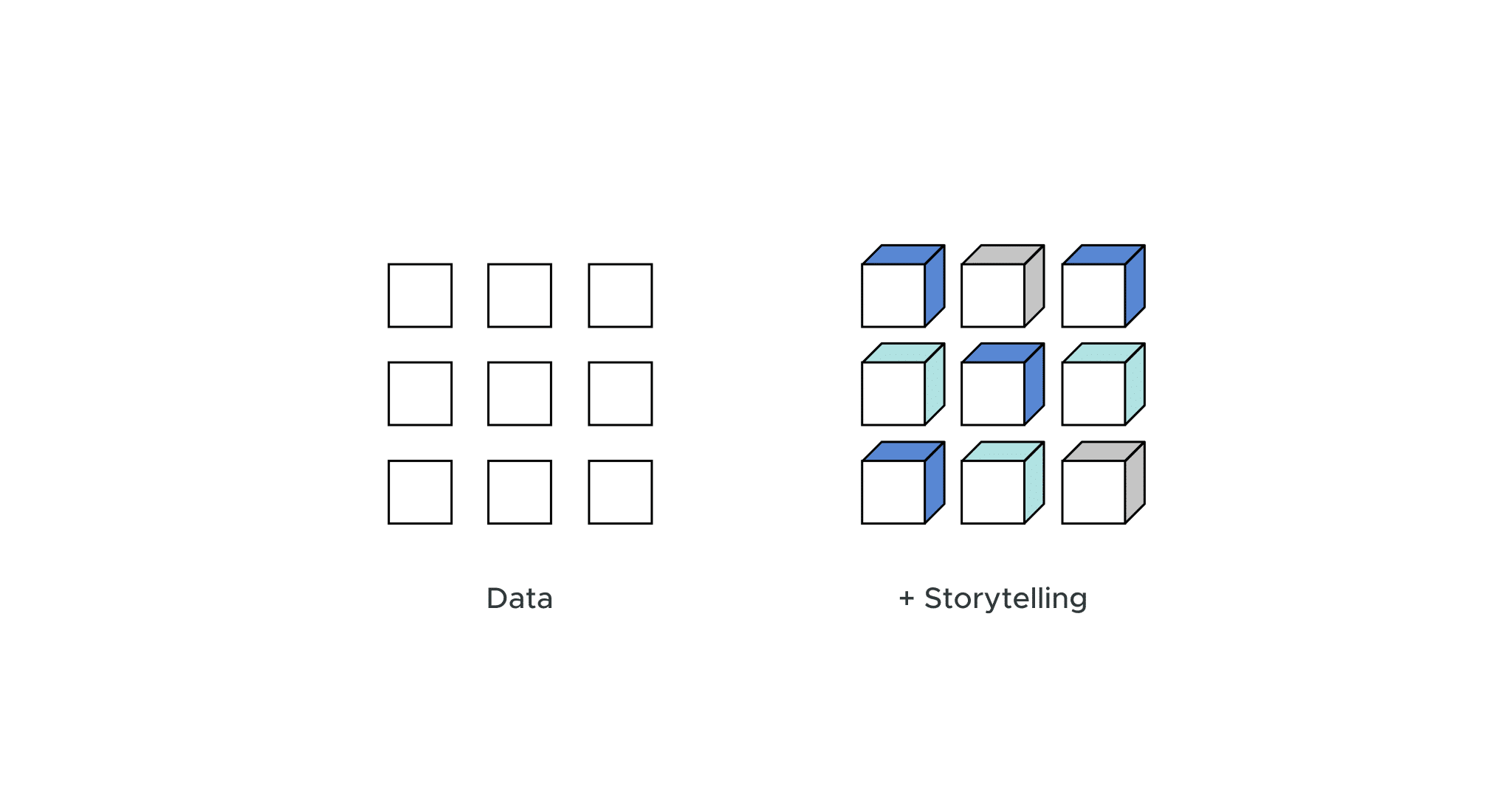December 15, 2022
How to Maximize the Value of AI and BI at Scale
Building Trustworthy Narratives
Data storytelling with trusted AI facilitates an engaging but trustworthy narrative. It makes sense of complex data sets by communicating insights in an easy-to-understand way. However, with the increasing use of AI in data analysis, there are growing concerns about the trustworthiness of these data stories. In this article, we’ll explore the concept of data storytelling with trustworthy AI.
What Is Data Storytelling?
Data storytelling uses data visualization, narrative techniques, and other storytelling tools to better communicate complex data sets. It helps people make sense of this data and use it for intelligent decision-making.
Organizations use data storytelling in various industries and contexts, including marketing, finance, healthcare, and government. For example, marketing teams can use data storytelling to create compelling narratives around consumer behavior, market trends, and brand performance. Meanwhile, healthcare organizations can use data storytelling to communicate complex medical data to patients and their families.
The Importance of Building Narratives With Trusted AI
As the use of AI in data analysis continues to expand, there is a growing need for trustworthy narratives. AI algorithms are often seen as “black boxes,” leading to distrust and skepticism. This is particularly true in finance, healthcare, and criminal justice, where users leverage AI algorithms to make crucial decisions.
Building trustworthy narratives requires a combination of transparency, accountability, and human oversight. It’s essential to be transparent about the data sources and algorithms used in data analysis, as well as the limitations and uncertainties of the data. AI users must also establish accountability for any decisions based on the data. Lastly, there must be human oversight to ensure that the data is being used responsibly and ethically.
Trusted AI: The Key To Building Trustworthy Narratives
Trusted AI is a set of principles and practices to ensure that AI algorithms are transparent, accountable, and ethical. It uses explainability, fairness, and robustness to ensure that a given AI algorithm is trustworthy.
Explainability
Explainability means understanding how an AI algorithm arrived at a particular decision. This is particularly important in areas such as healthcare and criminal justice, where decisions made by AI algorithms can have significant, life-changing consequences.
Fairness
Fairness is the idea that AI algorithms should treat all individuals fairly and without bias. It’s vital in areas like hiring, lending, and criminal justice, where the decisions made by AI algorithms can impact people’s lives.
Robustness
Robustness is the ability of an AI algorithm to perform well, even when faced with unexpected inputs or situations. This performance consistency is particularly important in healthcare and finance, where AI algorithms are increasingly used to make decisions in complex and uncertain environments.
Why Trusted AI Matters
By ensuring that AI algorithms are explainable, fair, and robust, users can establish trust and confidence in the decisions made by these algorithms. These principles safeguard organizations from the consequences of an incorrect, inconsistent, or biased AI decision.
Real-World Use Cases of Data Storytelling with Trusted AI
There are many real-world examples of data storytelling and AI in several industries. Here are just a few:
Healthcare
Data storytelling with trustworthy AI can communicate complex medical data to patients and their families. For example, data visualization tools can create personalized health reports showing a patient’s health status and suggesting customized interventions to improve their health.
Biofourmis’ Health Score AI tool is an example of this. The tool uses AI algorithms to analyze patient data such as heart rate, activity level, and sleep patterns. Then, it generates a personalized health score. The patient can access this health score through a user-friendly dashboard and view actionable insights for improving their health.
Finance
Data storytelling with reliable AI can also communicate complex financial data to investors and other stakeholders. Data visualization tools can create interactive dashboards showing a company’s performance across different financial metrics such as revenue, profit margins, and debt levels.
We can take Bloomberg Terminal, a financial data and analytics platform, as an example. It provides investors with real-time market data, news, and analytics. The platform uses AI algorithms to analyze financial data and generate insights communicated to users through interactive dashboards and other data visualization tools.
Criminal Justice
Data storytelling and trustworthy AI improve the fairness and transparency of the criminal justice system as well. For example, AI algorithms can analyze crime data to identify patterns and predict future crime hotspots. Law enforcement agencies can then use this data to deploy resources more effectively and prevent crime before it happens.
The PredPol predictive policing tool is an excellent example. It uses AI algorithms to predict crime hotspots and guide law enforcement patrols. The tool is transparent and fair, with clear guidelines for collecting and analyzing data. It’s also transparent about how law enforcement organizations implement decisions based on the data.
Data Storytelling With AI Is the Future
Data storytelling is an essential tool for making sense of complex data sets and communicating insights in a way that’s easy to understand. But the AI used to tell these stories must be trustworthy — with a combination of transparency, accountability, and human oversight.
When done correctly, data storytelling with AI improves outcomes for patients, investors, and society as a whole. By ensuring that these tools are designed to be transparent, fair, and robust, we can build trust and confidence in data-driven decisions and use data storytelling to create better, more informed business strategies.
Ready to take your data storytelling to the next level? Find out how AtScale’s semantic layer supports data storytelling projects with a unified view of all data.
WHITE PAPER